January 18, 2022
Winters can be long, especially in Canada.
Whether you’re looking to add some life to your home during the cold frigid months, or whether you want to get your gardening fix while the ground is frozen, indoor trees are the answer.
Not only can houseplants help you get your green fix, they also:
- Add style to your home,
- Purify the air,
- Act as a natural humidifier,
- Reduce stress and anxiety and boost your mood, and
- Promote healing.
To help you reap the benefits of houseplants and develop your green thumb, we’ve put together a list of the 13 best indoor trees for your home.
Top 13 Indoor Trees for a Happier Home
From fruit trees to succulents, tropicals to plants said to bring good luck, the following list of 13 indoor trees promise to liven up any home.
1. Weeping Fig Tree (Ficus benjamina)
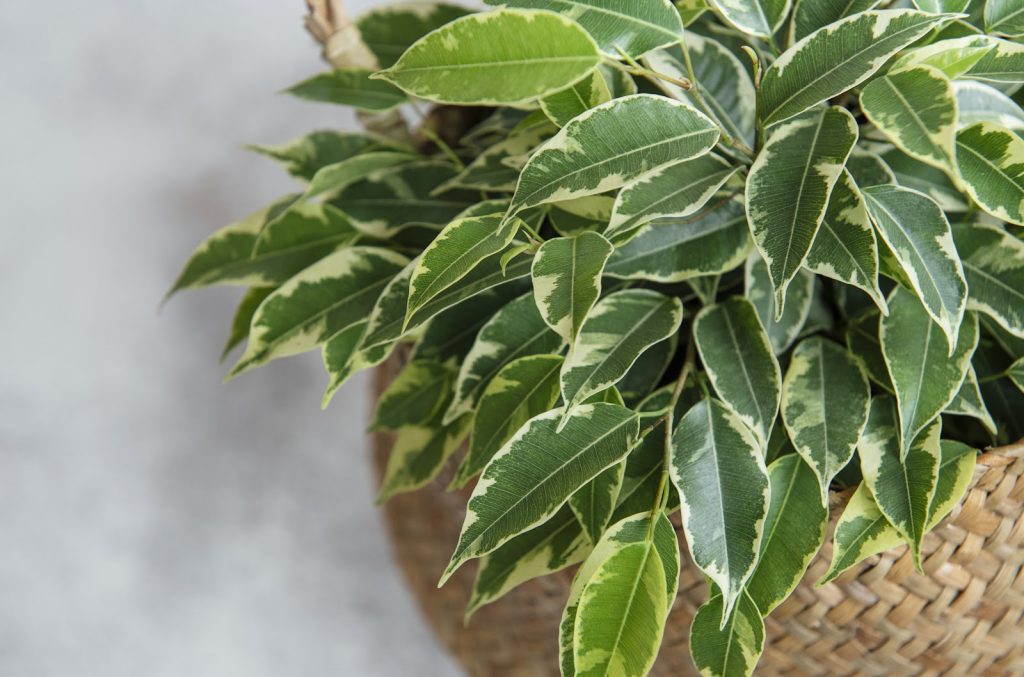
We begin our list with not one, but two different types of fig trees. The first is the weeping fig.
Don’t let the name fool you, this plant is anything but unhappy-looking. Although its branches droop downwards, hence the name, the leaves of a weeping fig offer a light and airy feel. From solid greens to variegated multi-shade colouring, a homeowner can find a tree in a tone that fits their taste.
How to care for your weeping fig tree
The classic ficus is popular because of its hardiness—it tolerates low-light and needs only a little watering.
Having said that, Albertans need to take special care to ensure their fig tree gets enough humidity. Weeping figs are prone to leaf drop. When they lose their leaves, low humidity is often the cause.
2. Fiddle-Leaf Fig Tree (Ficus lyrata)
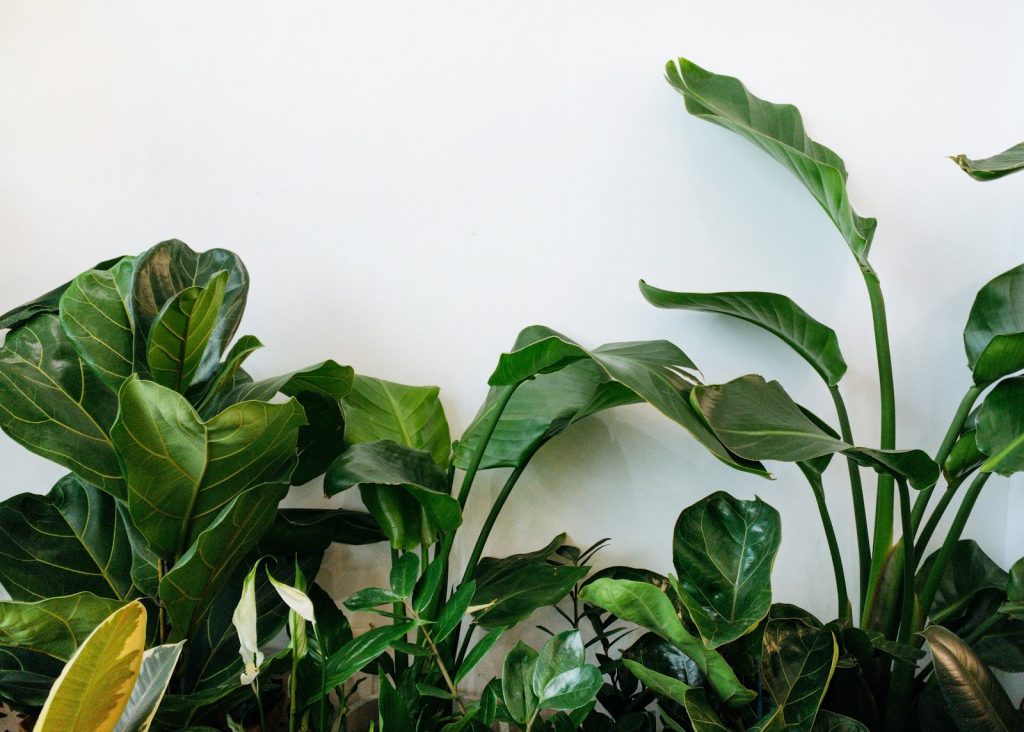
The second fig tree on our list is the fiddle-leaf fig.
If you’re wondering how to recognize one fig from another, you needn’t worry.
As the name implies, the fiddle-leaf can be distinguished from a weeping fig by its much larger, broader, textured, and more tropical-looking leaves.
How to care for your fiddle-leaf fig tree
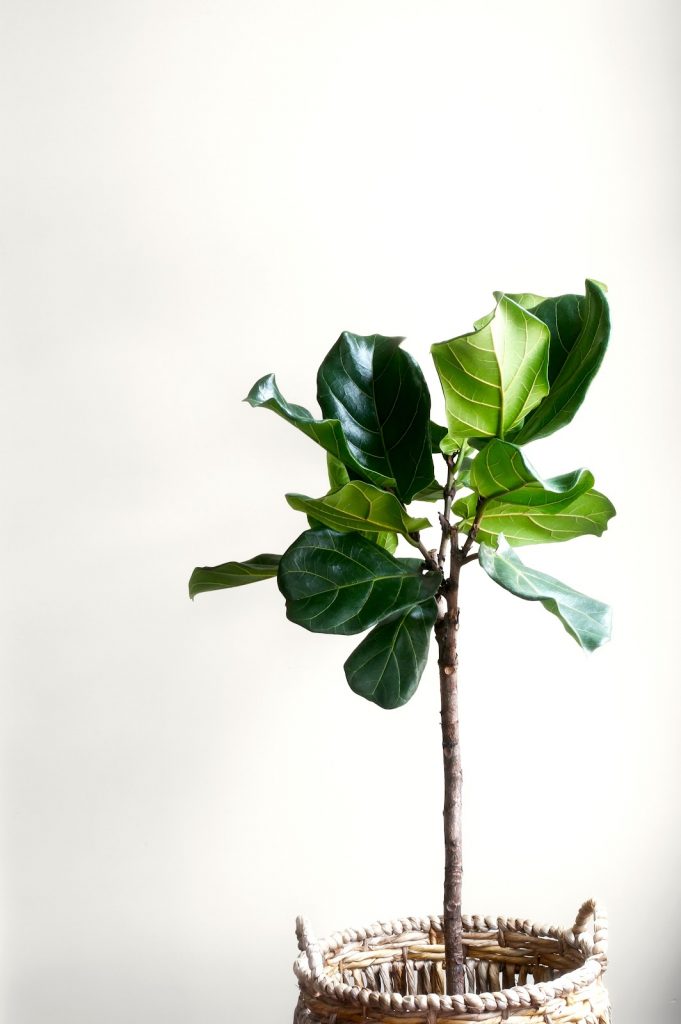
Fiddle-leafs have something in common with weeping figs: they love high humidity. They tend to be pickier plants that require an ideal location with the right amount of water, light, soil moisture, and airflow to thrive.
A good rule of (green) thumb is to offer it bright, indirect light—an east-facing window works well—and water it generously once a week, or as soon as the top inch of soil is dry.
A word about fiddle-leaf fig growth spurts
When you buy a fiddle-leaf fig it normally starts out as an unassuming, cute, densely-leaved houseplant.
Be warned: if your fiddle-leaf fig does thrive, it can grow into a sprawling tree that reaches 10 feet or more in height.
3. Calamondin Orange Tree (Citrus mitis)

From figs to oranges—yes, you can grow an orange tree indoors in Alberta!
Like the fig trees we’ve talked about, the calamondin orange tree is a dwarf varietal of its larger cousin. Miniature orange trees guarantee to offer sunshine-in-a-pot to get you through cold Canadian winters.
The best part: not only are they sunny-looking, orange trees also produce fragrant flowers that will leave your home smelling divine.
Before you ask: yes, you can squeeze the fruit to make juice, use the rind as a garnish for your drinks, and make marmalade out of them.
How to care for your calamondin orange tree
It’s as easy as 1-2-3 to care for your orange tree:
- Plant it in a clay pot to keep its roots well-aerated,
- Water sparingly and only when the top inch of soil is dry, and
- Keep it in an area that receives at least 6 hours of bright light a day
4. Cavendish Banana Tree (Musa species)
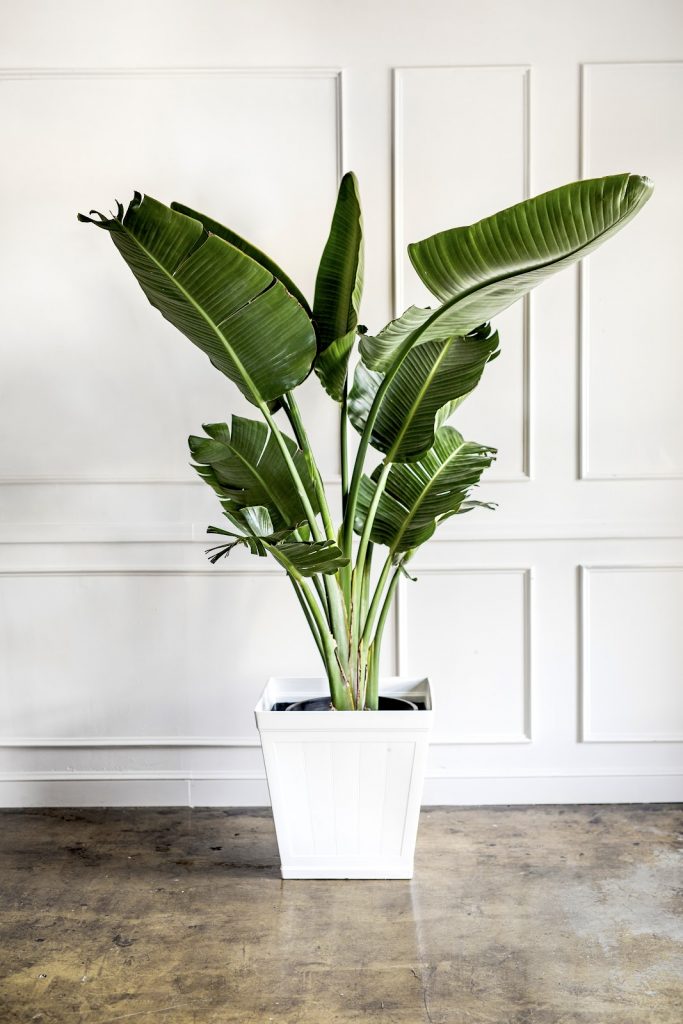
As with fig and orange trees, a miniature version of the banana tree is best for your indoor garden.
Don’t let the word miniature fool you though. Banana trees are fast-growing and can reach heights as tall as a fiddle-leaf fig—10 ft or more. The good news is they don’t mind pruning—phew!
How to care for your banana tree
Mulch your banana tree well, mist it daily, water it weekly, fertilize it once a month, and keep it in a humid, bright, sunny spot (like at a south window) where it can grab 6 hours of light a day.
5. Bird of Paradise (Strelitzia nicolai)

The gorgeous Birds of Paradise tree is closely related to the banana tree. They’re often mistaken for the latter because of their equally big, bold leves.
They don’t grow quite as high as banana plants, however, only reaching heights of 8 feet.
How to care for your Birds of Paradise
One drawback of those enormous leaves? Dust. Keep a duster handy to regularly and gently brush off the leaves.
Because their massive foliage captures a lot of light, Birds of Paradise can tolerate lower light conditions (4 hours compared to the six of the banana tree).
6. Bamboo or Parlor Palm Tree (Chamaedorea elegans)
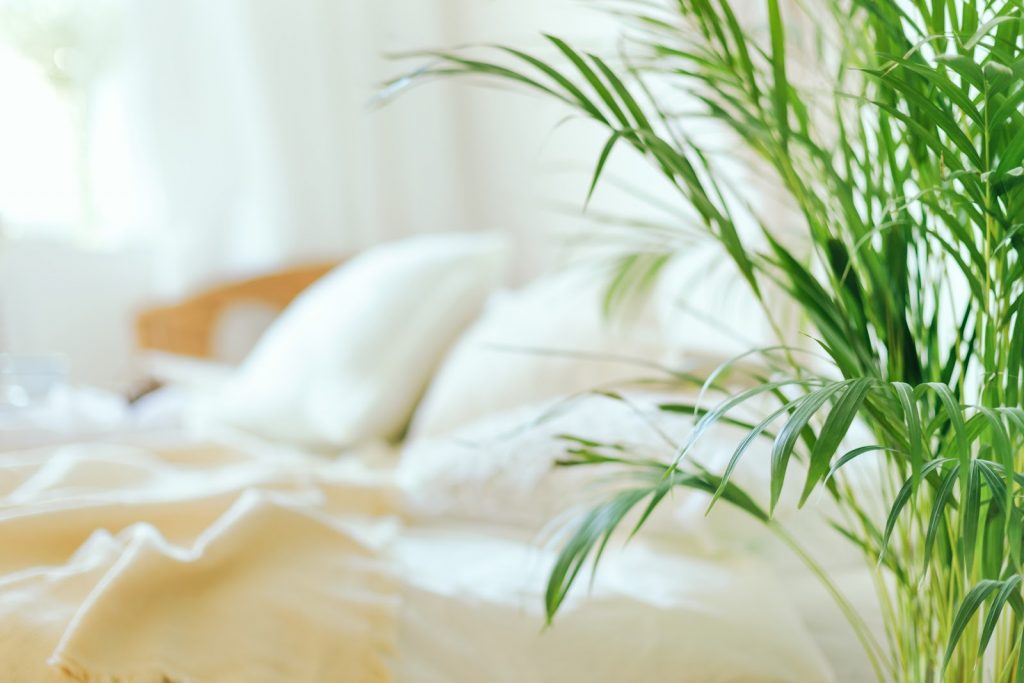
For those of you who aren’t hip to trees that grow fruit or tower past the first floor of your home, or if you live in dimmer quarters, you’ll love the next plant on our list: the bamboo, or parlor, palm.
Bought just about anywhere, bamboo palms have thin, delicate-looking foliage reminiscent of time spent in a tropical location—even if in reality you’re living in cold Southcentral Alberta.
The plant for pet lovers
Parlor palm trees have fronds that scream cat toy. If you have a cat, or dog, that likes to chew on leaves, this is the houseplant for you. It may not always look pristine but you can be sure it won’t make your pet sick.
How to care for your bamboo palm
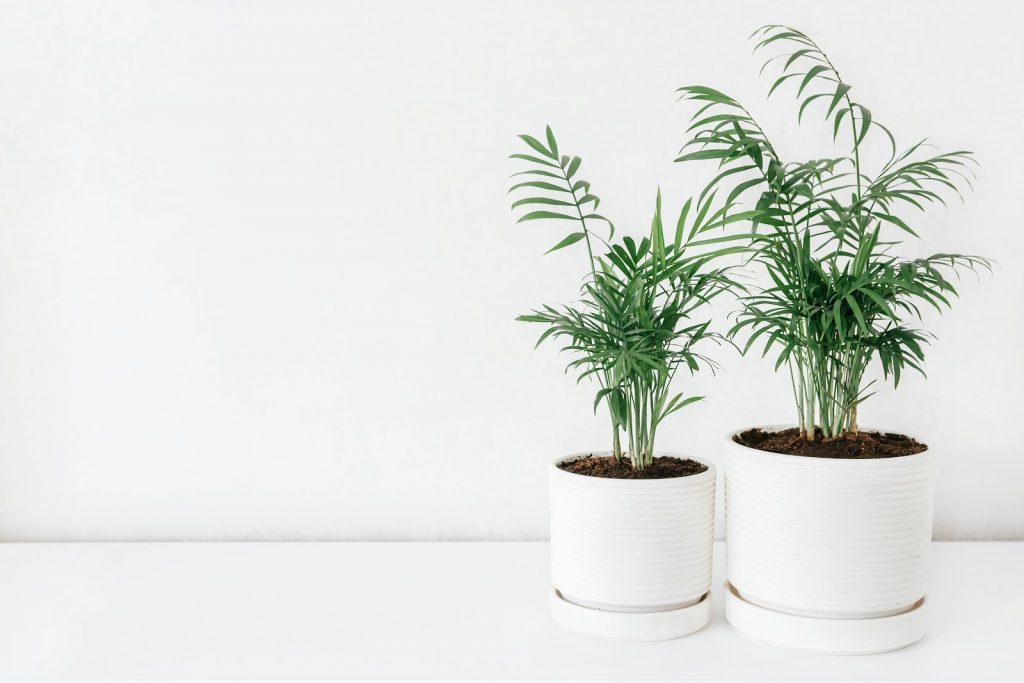
If you have a room that gets less light, you’ve found the perfect spot for your parlor plant. In fact, too much sun can burn the leaves. Best to keep your bamboo palm near an east or north-facing window.
Same goes for drafts. Like too much sun, bamboo palm trees hate being pummelled with cold air. Keep them away from air vents and AC units.
Before you start to think parlor palms are high-maintenance, we’ll have you know they take less water that the earlier trees on our list. If you forget to water your palm every now and again, it won’t hold it against you.
7. Yucca Tree (Yucca elephantipes)
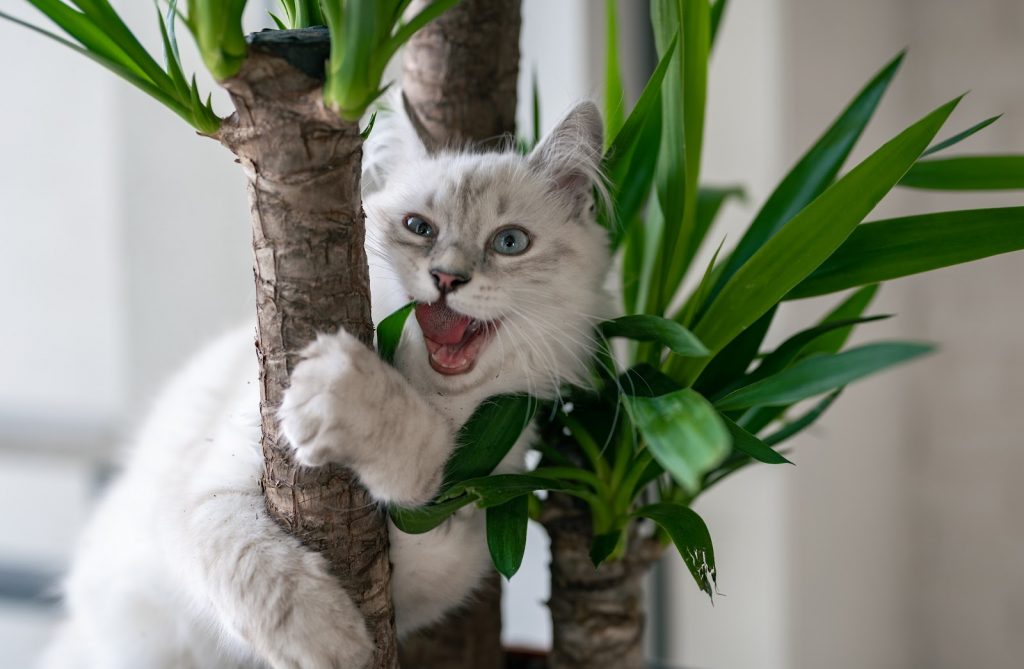
Pet owners listen up—unlike the parlor palm tree, yucca trees are toxic to pets! If you live with a cat or dog, best to choose another tree from our list to liven up your home.
If your household is human-only, then have at ‘er.
With its angular, spiky foliage and tall cactus-like trunks, this arid plant is sure to bring a touch of dessert style to your home.
How to care for your yucca tree
If you tend to forget to water your plants or if you’re away a lot, the yucca tree is for you. Water your yucca, then forget about it.
Be sure to keep it in a very bright spot, however. Yucca plants don’t tolerate low-light.
8. Umbrella Tree (Schefflera arboricola)

Similarly to the weeping fig mentioned earlier, the umbrella tree comes in various colours. From deep beautiful hues of green to vibrant speckled yellow and green versions, the umbrella plant will be a statement addition to your home.
Umbrella trees can grow up to 50 feet high but when kept indoors in a pot, they limit themselves to measly 8 feet.
How to care for your umbrella tree
Like the parlor palm, umbrella trees can live in low-light. Not too little, though. Insufficient light can cause them to look scrawny.
When they’re given adequate sunlight and fertilized monthly, they grow to their tallest potential.
Err on the side of under-watering with this plant otherwise you risk leaf loss and root rot.
9. Jade Plant (Crassula argentea)
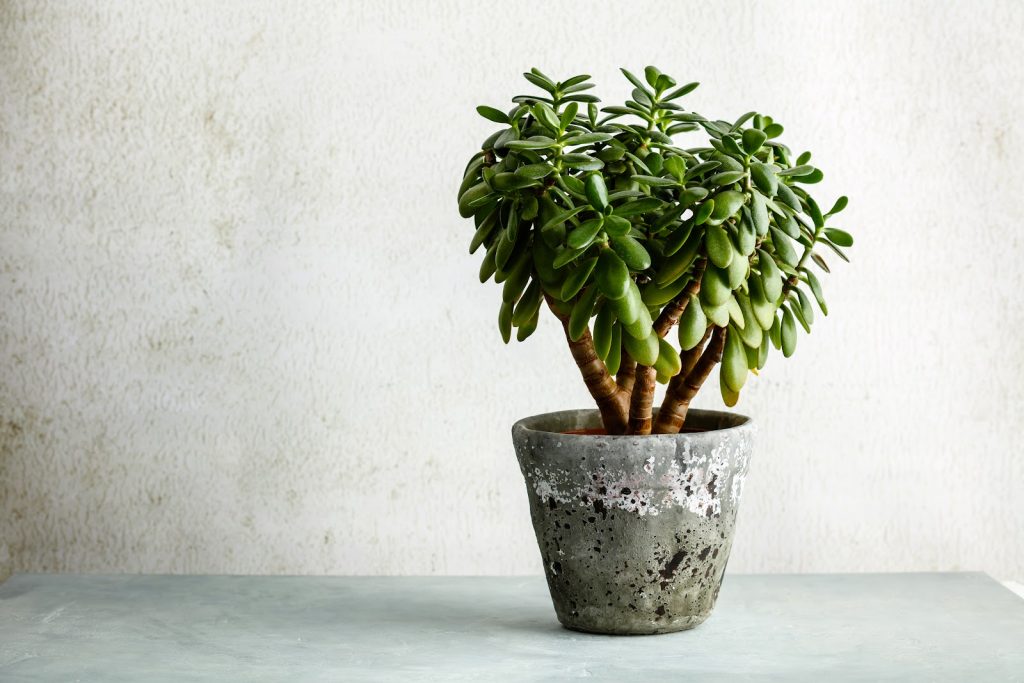
Who knew a jade plant could grow into a tree! It can, but unlike some of the other trees on this list, theys don’t go overboard with their growth. They start out small but in time can grow into a 3-foot miniature tree.
How to care for your jade tree

Jade plants are ideal for Alberta because they like dry conditions. They don’t, however, tolerate the cold!
Keep them in a dry, warm spot—their leaves and woody stems will freeze and turn black if exposed to cold (like near a window in the wintertime)
Plant in well-drained soil and keep it moist but not soggy— if the leaves start to droop, water it; if leaves turn brown and shrivel up, you’re not watering enough.
Best to under-water than overwater. If you’re going on vacation, don’t worry about your plant’s soil drying out while you’re away.
10. Corn Plant (Dracaena fragrans)
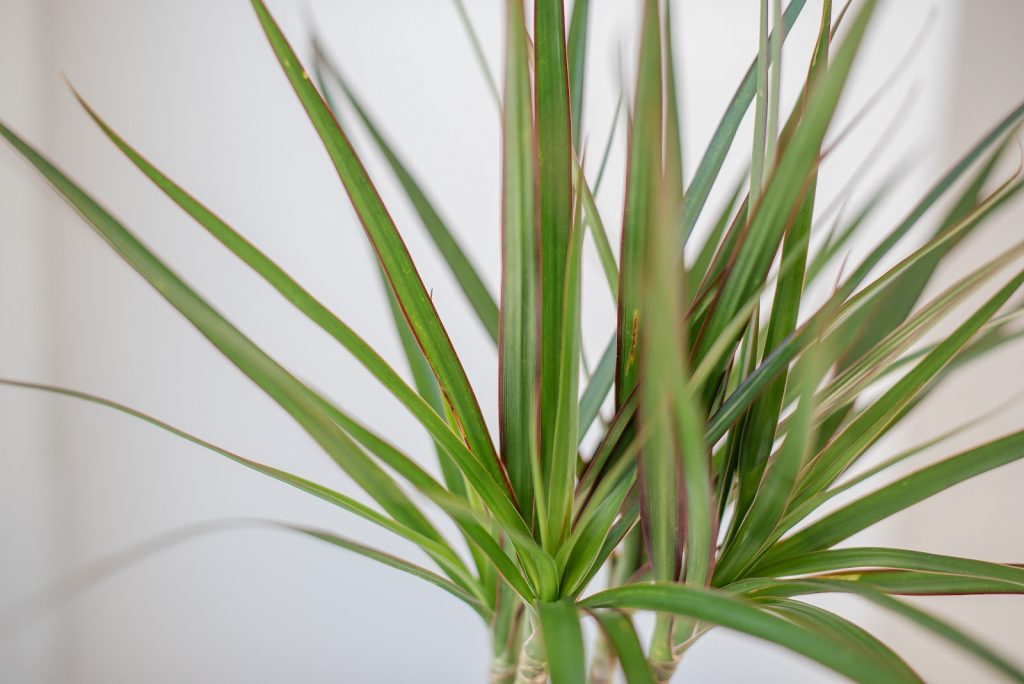
The majestic corn tree is another easy-to-care-for option. With very minimal care, this plant is a slow-grower that will climb steadily and reach heights of six feet within five to ten years.
Corn trees are not pet or human-friendly
Pet owners beware: Corn trees, and all plants in the dracaena family, are toxic to dogs, cats and humans. If you have pets and kids in the house, keep your corn tree out of reach!
Like jade trees, corn plants prefer warm locations, like near a south or west-facing window. Keep it away from direct light.
Fertilize twice a year (spring and fall), remove leaves when they dry up and wilt, and keep the soil moist, not soaked.
11. Rubber Plant (Ficus elastica)
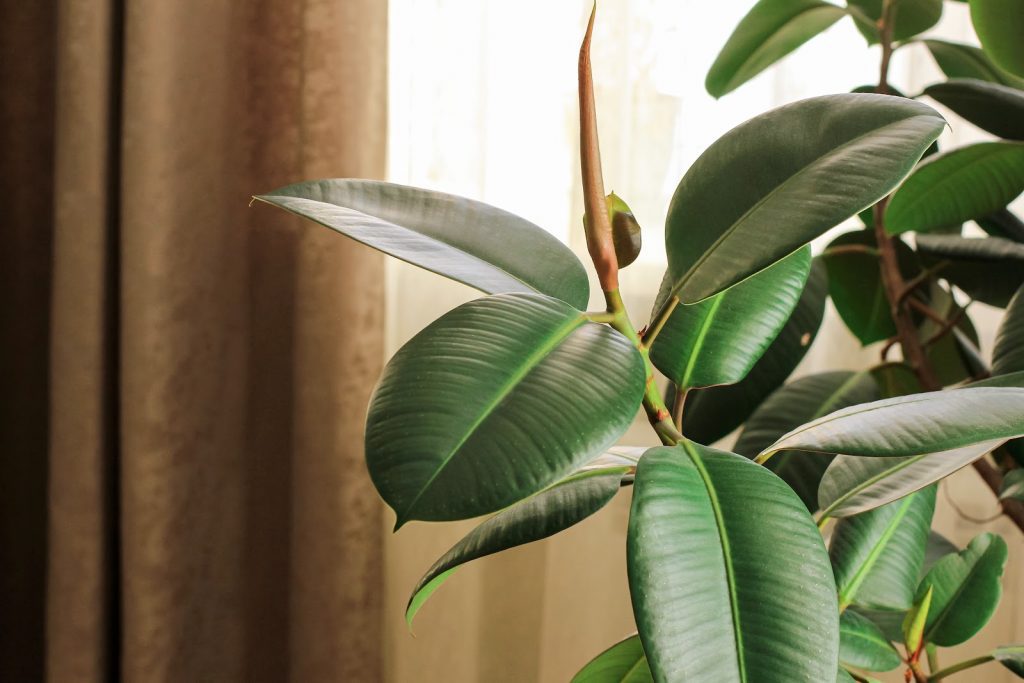
Out of all the trees on our list, the rubber plant is the one that wins for greatest number of colour varieties. From variegated to tricolour, deep eggplant and emerald green, this elegant and hardy houseplant is an excellent choice for your indoor garden.
How to care for your rubber tree
Water your rubber plant once a week and keep it in an area with bright, indirect light and you’ll have a happy plant for years to come.
12. Dumb Cane (Dieffenbachia)
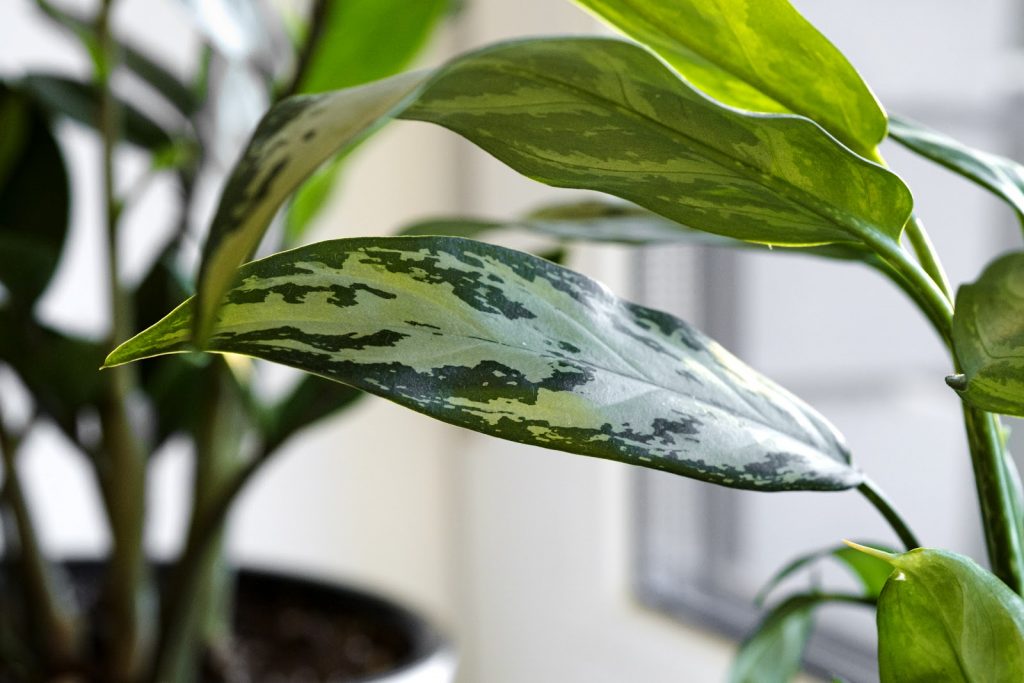
The large, lush, tropical-looking leaves of this tree will make you feel like you’re far away from the Canadian winter.
Unlike the corn tree, the dumb cane tree is fast-growing. Because of this superpower, you can cut off a stem, leave it in water until it sprouts roots, and replant it (and even gift it) to make a second tree.
Like the corn tree, these houseplants are not pet-friendly. Keep them in an area far away from your furry friends.
How to care for your dumb cane
Keep your dumb tree in the same spots as your corn and rubber trees: in areas with filtered, indirect light.
Add rocks to the bottom of your dumb cane pot to ensure the soil stay well-drained.
13. Guiana Chestnut aka Money Tree (Pachira aquatica)

The last tree on our list is for the superstitious. The guiana chestnut, or money tree, is considered a symbol of prosperity. If you’re looking to add some luck to your life, bring home a money tree.
A unique umbrella-shape tree with a braided trunk and five-leaf clusters, this tree can grow up to 6 feet tall.
How to care for your money tree
Place this fortuitous tree in a corner with dappled light, keep the room humidity high, fertilize it now and then for fuller growth, and water it every couple of weeks and your money will grow.
The leaves of a money tree hate direct light. Avoid burning them by filtering light that hits your chestnut tree.
Next Steps: How to Care For Your Outdoor Trees

Bravo—you officially have a green thumb!
Now that you know which trees to add to your indoor space you can start to think about the ones you have in your outdoor space.
If you have a question about caring for your trees during the winter, or if you’d like to get a head start on planning your spring landscaping, give us a call. Our team of experts at Pevach would be happy to care for, maintain, and manage property.
Just don’t ask us to take one of our mowers to one of your indoors trees—that may be overkill!
